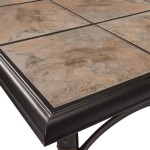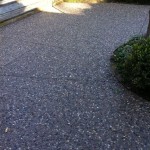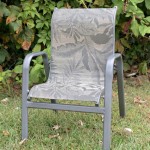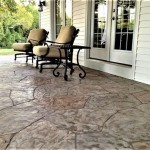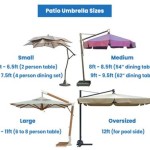Paver Ideas for Patio Design and Construction
Patio design is integral to creating a functional and aesthetically pleasing outdoor living space. Pavers offer a versatile and durable solution for patio construction, with a wide array of options available in terms of material, color, size, and laying patterns. This article will explore various paver ideas to aid in the design and construction of patios that meet specific needs and preferences.
Material Options for Patio Pavers
The selection of paver material significantly impacts the overall look, durability, and maintenance requirements of a patio. Common paver materials include concrete, brick, natural stone, and porcelain.
Concrete Pavers: Concrete pavers are a popular choice due to their affordability and versatility. They are manufactured in a wide range of shapes, sizes, colors, and textures, allowing for diverse design possibilities. Concrete pavers can mimic the appearance of natural stone or brick, often at a lower cost. They are also durable and resistant to weathering, making them suitable for various climates. However, concrete pavers may be susceptible to fading over time, especially in areas with intense sunlight. Regular sealing can help to mitigate this issue.
Brick Pavers: Brick pavers offer a classic and timeless aesthetic. They are made from clay and fired in kilns, resulting in a durable and long-lasting material. Brick pavers are available in various shades of red, brown, and gray, and their natural color variations contribute to their rustic charm. Brick is inherently porous, which can lead to water absorption and potential damage from freezing and thawing in colder climates. Proper installation with adequate drainage is essential for brick paver patios. Sealing can also enhance their resistance to moisture and staining.
Natural Stone Pavers: Natural stone pavers, such as flagstone, slate, travertine, and bluestone, provide a unique and luxurious look. Each stone is naturally different, resulting in a patio with character and individual appeal. Natural stone pavers are highly durable and resistant to weathering. However, they can be more expensive than concrete or brick pavers. The installation of natural stone pavers requires careful planning and execution due to variations in thickness and shape. Proper bedding and leveling are crucial for a stable and even surface. Regular cleaning and sealing can help to maintain the natural beauty of stone pavers.
Porcelain Pavers: Porcelain pavers are a relatively new option for patio construction and they offer several advantages over traditional materials. They are manufactured from ceramic clay and fired at high temperatures, resulting in a dense and non-porous material. Porcelain pavers are highly resistant to staining, fading, and scratching. They are also slip-resistant, making them a safe choice for patios, especially around pools or in areas that receive frequent rainfall. Porcelain pavers are available in a wide range of colors, patterns, and textures, including options that mimic wood, stone, or concrete. They are also relatively lightweight, which can simplify installation. While porcelain pavers may have a higher initial cost than concrete or brick pavers, their durability and low maintenance requirements can make them a cost-effective choice in the long run.
Paver Laying Patterns and Design Considerations
The laying pattern of pavers can significantly impact the visual appeal of a patio. Different patterns create distinct aesthetics and can influence the perceived size and shape of the space. Common paver laying patterns include running bond, herringbone, basketweave, and circular patterns.
Running Bond Pattern: The running bond pattern is one of the simplest and most common paver laying patterns. It involves laying pavers in a straight line with each subsequent row offset by half a paver length. This pattern creates a clean and linear look, and it is suitable for both rectangular and square patios. The running bond pattern is relatively easy to install and requires minimal cutting, making it a cost-effective option.
Herringbone Pattern: The herringbone pattern creates a more dynamic and visually interesting effect. It involves laying pavers at a 45-degree angle to each other, forming a zigzag pattern. The herringbone pattern is often used in brick paver patios to create a traditional and elegant look. This pattern can be more challenging to install than the running bond pattern, requiring more precise cutting and alignment. A herringbone pattern is particularly effective for defining specific areas within a patio or for creating a focal point.
Basketweave Pattern: The basketweave pattern involves arranging pavers in alternating pairs, with each pair oriented perpendicular to the adjacent pair. This pattern creates a woven effect and is suitable for both square and rectangular pavers. The basketweave pattern is relatively easy to install and provides a visually appealing alternative to the running bond pattern. It can be used to create a more formal or informal look, depending on the type of paver used.
Circular Pattern: Circular patterns can add a unique and eye-catching element to a patio design. These patterns typically involve arranging pavers in concentric circles around a central point. Circular patterns can be created using specialized paver shapes or by cutting standard pavers to fit the desired curvature. These are more complex to install and often require professional assistance. These patterns are best suited for larger patios or for creating a focal point within a smaller space.
Beyond the laying pattern, several other design considerations can influence the overall look and functionality of a paver patio. These include the size and shape of the patio, the color and texture of the pavers, the use of borders and edging, and the integration of landscaping and other features.
The size and shape of the patio should be proportional to the size of the surrounding yard and should reflect the intended use of the space. Consider how the patio will be used for dining, lounging, entertaining, or other activities, and design the space accordingly. The color and texture of the pavers should complement the style of the house and the surrounding landscape. Lighter-colored pavers can make a space feel larger and brighter, while darker-colored pavers can create a more intimate and cozy atmosphere. Textured pavers can provide added slip resistance and visual interest. Borders and edging can define the perimeter of the patio and create a finished look. They can also be used to separate different areas within the patio or to integrate landscaping elements. Integrate landscaping to soften the edges of the patio and create a more natural and inviting space. Use plants, shrubs, and trees to provide shade, privacy, and visual interest. Consider incorporating other features, such as fire pits, water features, or outdoor kitchens, to enhance the functionality and enjoyment of the patio.
Installation and Maintenance of Paver Patios
Proper installation is crucial for the longevity and performance of a paver patio. A well-installed patio will provide a stable and level surface that is resistant to sinking, shifting, and weed growth. The installation process typically involves several steps, including excavation, base preparation, paver laying, and joint sealing.
Excavation: The first step in the installation process is to excavate the area where the patio will be located. This involves removing the topsoil and any vegetation, and digging down to a depth that will accommodate the base material and the pavers. The depth of excavation will depend on the type of soil and the expected traffic load. A general rule of thumb is to excavate to a depth of at least 6 inches for patios that will receive light foot traffic and 8 inches or more for patios that will be used for heavier traffic or vehicular access.
Base Preparation: After excavation, the base material is installed. The base provides a stable and level foundation for the pavers. The most common base material is crushed stone, which is compacted in layers to create a dense and uniform surface. The thickness of the base layer will depend on the type of soil and the expected traffic load. A general rule of thumb is to use at least 4 inches of crushed stone for patios that will receive light foot traffic and 6 inches or more for patios that will be used for heavier traffic or vehicular access. A layer of geotextile fabric can be placed between the soil and the base material to prevent the soil from migrating into the base and compromising its stability.
Paver Laying: Once the base is prepared, the pavers can be laid. Start by establishing a level and square reference line along one edge of the patio. Use a string line and a level to ensure that the pavers are installed in a straight line. Lay the pavers according to the chosen laying pattern, using a rubber mallet to gently tap them into place. Leave a small gap between each paver to allow for expansion and contraction. Use a paver saw to cut pavers to fit around edges and corners.
Joint Sealing: After the pavers are laid, the joints between them need to be filled. This can be done with sand, polymeric sand, or grout. Sand is the most common and least expensive option. Polymeric sand is a mixture of sand and polymers that hardens when wetted, providing a more durable and weed-resistant joint. Grout is a cement-based material that provides a rigid and waterproof joint. The choice of joint material will depend on the type of paver and the desired aesthetic. Once the joints are filled, the patio is ready for use.
Regular maintenance is essential for keeping a paver patio looking its best and extending its lifespan. This includes regular cleaning, weed removal, and joint sealing. Clean the patio regularly with a broom or hose to remove dirt, leaves, and other debris. Use a pressure washer to remove stubborn stains or algae growth. Remove weeds that grow between the pavers by hand or with a weed killer. Re-seal the joints every few years to prevent weed growth and maintain the integrity of the patio. By following these simple maintenance tips, a paver patio can provide years of enjoyment and enhance the beauty and value of a home.

Planning For A Paver Patio Ideas And Inspiration Town Country Living

Top 60 Best Paver Patio Ideas Backyard Dreamscape Designs Outdoor Pavers

Paver Patio Ideas The Cards We Drew

450 Best Patio With Pavers Ideas Paver Design

Paver Patio Ideas S Belgard Pavers

Paver Patio Ideas 5 Inspirational Designs For Comfortable Outdoor Living Leave Your Mark Llc

Small Patio Pavers Ideas Paver House

10 Tips And Tricks For Paver Patios

Paver Patio Ideas S Belgard Pavers

14 Paver Patio Ideas For The Best Backyard Retreat
Related Posts

